Everything you need to know about the Oklahoma-made movie 'Killers of the Flower Moon'
Two years after Martin Scorsese filmed it in Oklahoma, the iconic director's "Killers of the Flower Moon" is one of the most anticipated movies of 2023.
The three-hour and 26-minute epic received rapturous reviews and a lengthy standing ovation at its May 20 world premiere at the prestigious Cannes Film Festival in France, and it's already earning Oscar buzz months ahead of its fall theatrical date.
With its starry cast and reported $200 million budget, Scorsese's fact-based Western is one of the biggest movie productions ever undertaken in Oklahoma. But it's also chronicling one of the most horrific and often-overlooked chapters in the Sooner State's complicated history.
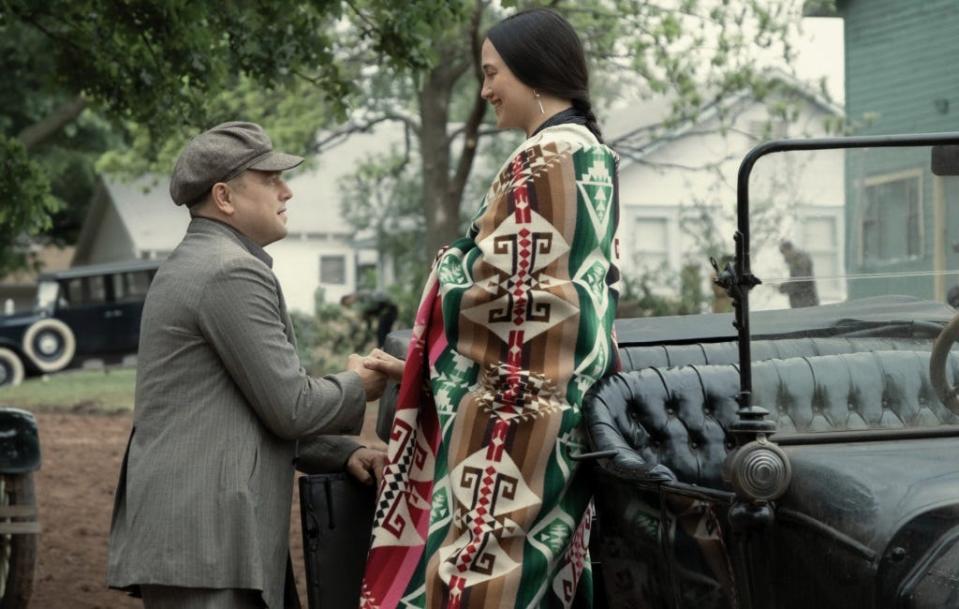
Here's everything you need to know about "Killers of the Flower Moon":
What does the title 'Killers of the Flower Moon' mean?
With its screenplay co-written by Scorsese and Oscar winner Eric Roth ("Forrest Gump"), the film is an adaptation of David Grann's 2017 New York Times best-seller and National Book Award finalist “Killers of the Flower Moon: The Osage Murders and the Birth of the FBI."
Grann's book begins by detailing why the Osage people refer to May as the "time of the flower-killing moon," a season when taller, heartier plants overgrow and choke out spring flowers. It becomes a metaphor for the greed, racism, treachery, death and injustice that plagued the Osage Nation in the 1920s, which should have been an era of unbridled prosperity but instead became known as the "Reign of Terror."
"The Osage, I always say they know their history intimately. They know this part of their history; they know what happened. But there were far too many of us who didn't ... in Oklahoma and across the country," Grann told The Oklahoman in a 2020 interview.

What was the Reign of Terror, the history behind 'Killers of the Flower Moon?'
In the 1870s, the Osage became the only American Indian nation to buy its own reservation, and a quarter-century later, oil was discovered under the land the tribe collectively owned.
Leading up to Oklahoma statehood, the U.S. Congress passed the 1906 Osage Allotment Act, legislating that property and mineral income be distributed equally among the more than 2,200 members of the tribe. One equal share became known as a headright, and a headright was hereditary, passing to the immediate legal heir of the deceased — even if that heir wasn't Osage.
In the 1920s, oil production in the Osage Nation reached a zenith, the tribe’s members had famously become the richest people per capita in the world, and the area became a magnet for schemers who plotted to strip the Osage people of their headrights and wealth by any means necessary.
Between 1920 and 1925, there were more than 60 mysterious or unsolved murders in Osage County, all connected with Osage headright holders. Some were shot, some were poisoned, and a few were even bombed in what became known as the Reign of Terror.
How did the US respond to the Reign of Terror in 1923?
In 1923, the tribe sent a delegation to Washington, D.C., to request the federal government investigate. The U.S. Bureau of Investigation (the precursor to the FBI) dispatched agents to the Osage Nation in Oklahoma.
"We paid at that time, in the '20s, $20,000 to hire the FBI to find the killers of our people that were being murdered," Danette Daniels, an Osage businesswoman who still lives in Fairfax and owns the Water Bird Gallery in downtown Pawhuska, told The Oklahoman in 2021.
In 1921, the federal government mandated that the Osage people were incapable of managing their own wealth. For no other reason than that they were Osage, adults were assigned court-appointed white guardians who often swindled tribal members out of their fortunes.
"My biggest takeaway, in the case of 'Killers of the Flower Moon' and the murders that it covers, is the subhuman way that Native Americans were treated — not just that they were murdered, but that it wasn't even hardly viewed as a crime that they were murdered. The perpetrators were allowed by local and state authorities to basically get away with it. It required federal intervention for anyone to really be held accountable," Oklahoma City Mayor David Holt, who is Osage, told The Oklahoman in 2021.
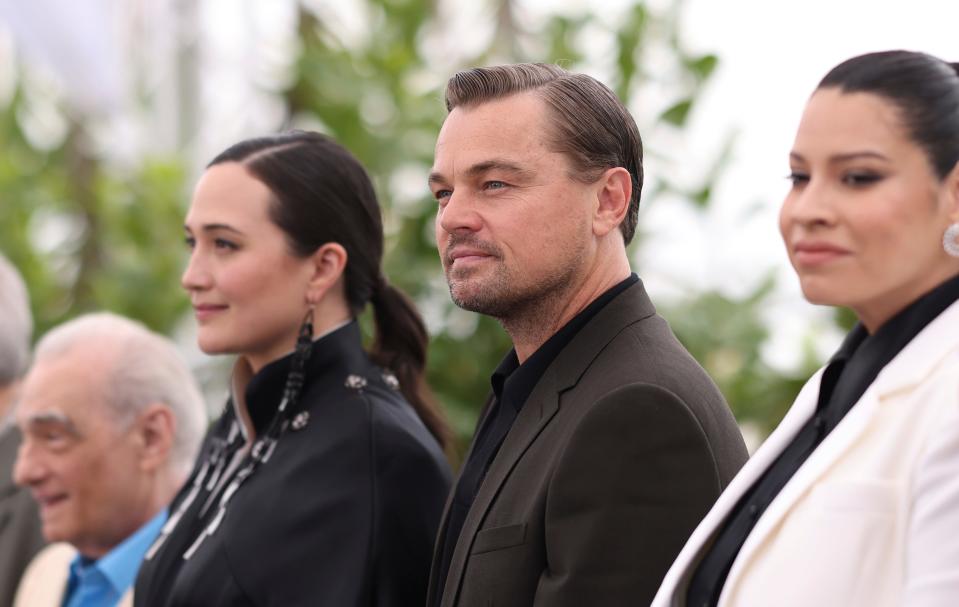
Who are Ernest and Mollie Burkhart in 'Killers of the Flower Moon?'
Grann's book centers on Mollie Kyle Burkhart, a real-life Osage woman who lived on the tribal settlement of Gray Horse, near Fairfax. During the Reign of Terror, she and her family were marked for death in a vicious scheme to swindle away their oil money.
"There were so many undocumented murders. The Mollie Burkhart family is a microcosm of the bigger picture," Daniels said.
Although he and Roth initially approached their film adaptation as a Western police procedural, Scorsese said at a Cannes Film Festival press conference that he ultimately decided to center the story on Mollie, played by up-and-coming Native American actress Lily Gladstone, and her treacherous husband, Ernest Burkhart, portrayed by Oscar winner Leonardo DiCaprio.
"It’s not a whodunit. It’s a who-didn’t-do-it," Scorsese said. "The story is in the character that the least is written about, Ernest. And of course, that's what Leo wanted to do. He said, 'Let's try to find who Ernest is, and let's create Ernest as an example ... for that tragedy of love, trust and betrayal of the Indigenous people.'"
Who are Leonardo DiCaprio, Lily Gladstone and Robert De Niro playing in 'Killers of the Flower Moon?'
Gladstone ("Fancy Dance"), who is Blackfeet and Nez Perce, is already being hailed as an Oscar contender for her portrayal of Mollie, whose trust in her husband almost proved fatal.
"Mollie was a trick in holding true to not only the way she's perceived in the book but by the legacy that she's left in the community, by playing an Osage woman who conducts herself with grace and with measure, but also with humor and with unshakable strength," Gladstone said at Cannes.

Although he was initially tapped to play federal Agent Tom White, DiCaprio, who is also producing through his Appian Way Productions, reunites with Scorsese to play Ernest, who is caught between his love for his wife and a deadly plot masterminded by his uncle, William K. Hale.
"I think the gamble was to take on this incredibly important story that really was a reckoning with our past," DiCaprio said at Cannes. "It was really a throwback to great epic films of the 1940s that has, at its center, this very twisted, bizarre love story that we really worked very hard on."
Another frequent Scorsese collaborator and Oscar winner, De Niro portrays Hale, a powerful rancher and businessman who proclaimed himself “King of the Osage Hills" and led the plot that killed Mollie's family as well as several other Osage people. In real life, Hale was eventually convicted of murdering Osage rancher Henry Roan (Indigenous Canadian actor William Belleau), but only served 18 years of his life sentence before he was paroled.
"There's a kind of feeling of entitlement that I guess you could say we became a lot more aware of after George Floyd with systemic racism," De Niro said at Cannes. "It’s the banality of evil. It’s the thing that we have to watch out for. We see it today, of course."

Who are Brendan Fraser and Jesse Plemons playing in 'Killers of the Flower Moon?'
New Academy Award winner Brendan Fraser, recently named best actor for his turn in "The Whale," plays Hale's lawyer, W.S. Hamilton. Two-time Oscar nominee John Lithgow ("Terms of Endearment") co-stars as Prosecutor Leaward, a man on a mission to convict Hale of murder.
Oscar nominee Jesse Plemons ("The Power of the Dog") took over the role of White, the forthright lawman who leads the federal investigation, after DiCaprio decided to play Ernest instead.
Native actress Tantoo Cardinal (“Dances with Wolves") who is Dene, Cree, Metis and Nakota, took on the role of Mollie's mother, Lizzie Q. Cara Jade Myers (“Rutherford Falls"), a member of the Wichita Tribe; JaNae Collins ("Longmire"), who is Fort Peck Assiniboine and Sioux and Apsáalooke (Crow); and Jillian Dion ("Into the West"), who is Plains Cree, Metis and French-Canadian, play Mollie's three sisters.

Native American actor Tatanka Means (“I Know This Much is True"), who represents the Navajo, Oglala Lakota and Omaha Nations, portrays federal agent John Wren, who was part Ute. Michael Abbott Jr. (“The Death of Dick Long") plays federal agent Frank Smith, and Pat Healy (“Bad Education") portrays federal agent John Burger.
In his live-action acting debut, singer-songwriter Jason Isbell portrays Bill Smith, Mollie's brother-in-law, while fellow Grammy winner Sturgill Simpson plays ex-rodeo champ and bootlegger Henry Grammer. Grammy-winning rocker Jack White recently revealed on social media that he has a small part in the film, too.
Louis Cancelmi (Scorsese's "The Irishman") portrays Kelsie Morrison, another bootlegger as well as a nefarious Hale connection. Scott Shepherd ("Jason Bourne") plays Bryan Burkhart, the younger brother of DiCaprio's Ernest Burkhart.
Osage Nation citizen Yancey Red Corn portrays Chief Bonnicastle. His father, the late Osage author Charles Red Corn, wrote about the Reign of Terror in his early 2000s book "A Pipe for February." Scorsese said Red Corn's book also influenced his movie, and he would like to see it made into a film, too.
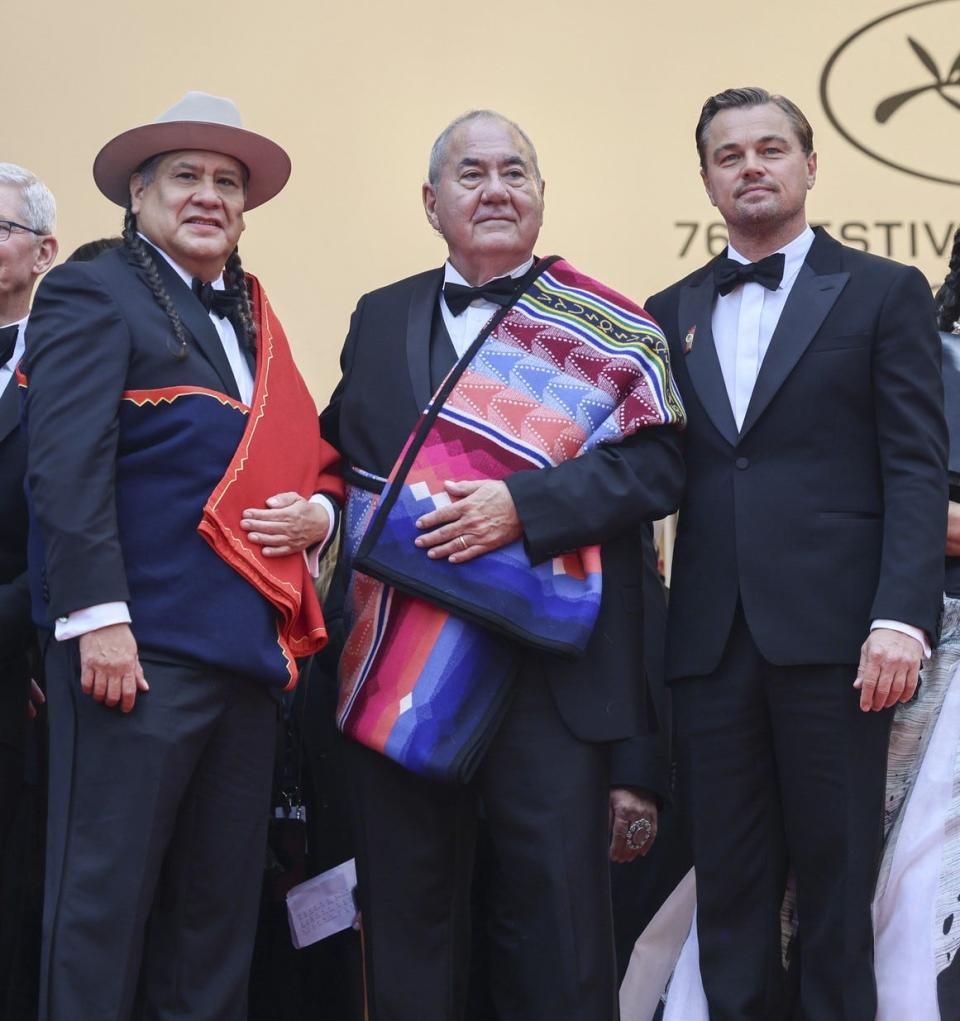
How the Osage Nation has been involved in making 'Killers of the Flower Moon'
At Cannes, Scorsese said his adaptation of "Killers of the Flower Moon" was shaped by his interactions in Oklahoma with members of the Osage Nation, whom he sought out as collaborators early on in the multi-year process of bringing the sprawling story to the silver screen.
Osage Nation Chief Geoffrey Standing Bear named Chad Renfro the tribe's ambassador to the production, and the filmmakers worked with many cultural consultants, local artisans and Osage Nation citizens in the making of the movie.
Several Osage citizens, including Standing Bear, attended the film's premiere in Cannes.
“Early on, I asked Mr. Scorsese, ‘How are you going to approach the story?' He said, 'I’m going to tell a story about trust — trust between Mollie and Ernest, trust between the outside world and the Osage — and the betrayal of those trusts,'” Standing Bear said during the Cannes press conference.
“My people suffered greatly and to this very day, those effects are with us. But I can say on behalf of the Osage, Marty Scorsese and his team have restored trust, and we know that trust will not be betrayed.”
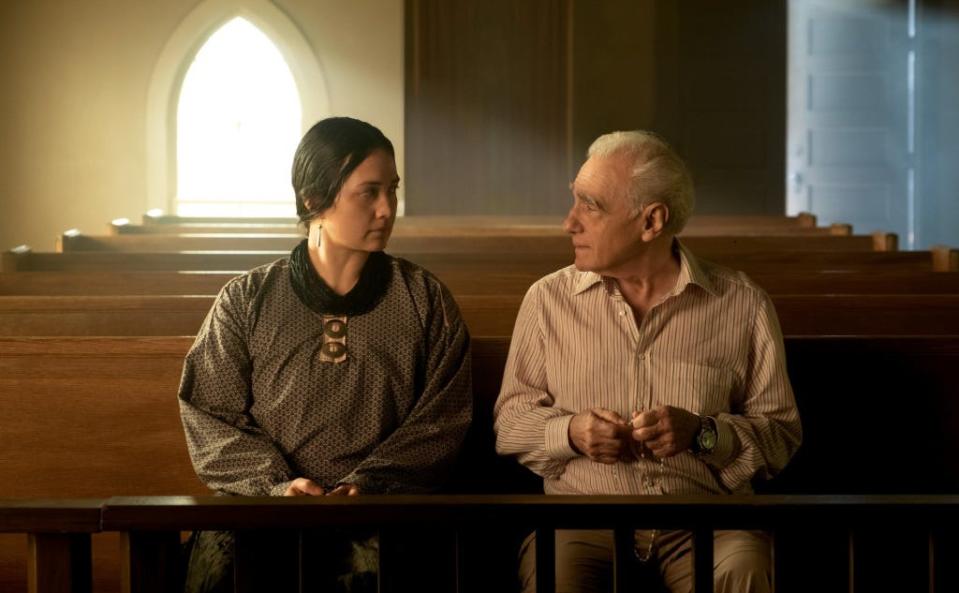
How do Osage people feel about the movie 'Killers of the Flower Moon?'
Like many of his fellow Oklahoma-based Osage citizens, Russ Tallchief told The Oklahoman that the story of the Reign of Terror needs to be told, and he believes the story is in good hands with Scorsese and DiCaprio.
"I am happy that the filmmakers took their time in developing the film. We have all been anxiously waiting to see how we will be portrayed, and I trust that our tribal ambassadors and leaders have worked diligently with the filmmakers to ensure that our story is told respectfully," said Tallchief, a dancer, actor and writer who danced the Charleston for four days as an extra in the film.
"I'm excited, but also nervous about it. I really want the film to be something special."
Daniels, the Pawhuska gallery owner, said she was impressed when she met Scorsese at a 2019 dinner prepared by the Osage Gray Horse community.
"I was selected as one of the speakers to get up and to express concerns about the feature film and how we'd be depicted and just to tell him and his crew who we are as people," she told The Oklahoman. "He struck me and most of the people as a very sincere person who wants to get this right and do right by us. But I also know this is not a documentary."
Some Osage people are skeptical about the movie, Daniels said, but "at least we've had input into the process."
With Hollywood's long history of misrepresenting, underrepresenting and stereotyping Native Americans, some Osages said their skepticism is warranted. An Osage filmmaker, photographer and comedian based in Pawhuska, Ryan RedCorn — a writer on the Oklahoma-made streaming series "Reservation Dogs," which has been hailed for its Native representation in front of and behind the camera — noted that Scorsese's movie doesn't star any members of the tribe in major roles, nor is it directed or written by anyone who is Osage.
"Whatever images come out in that movie, I'm not in charge of — and I'm saying that as somebody who has a great-grandfather who was murdered in the Reign of Terror," RedCorn told The Oklahoman in 2021.
"Whatever happens in that movie is going to affect the way that people perceive me, and it's going to affect the way that people perceive my children."
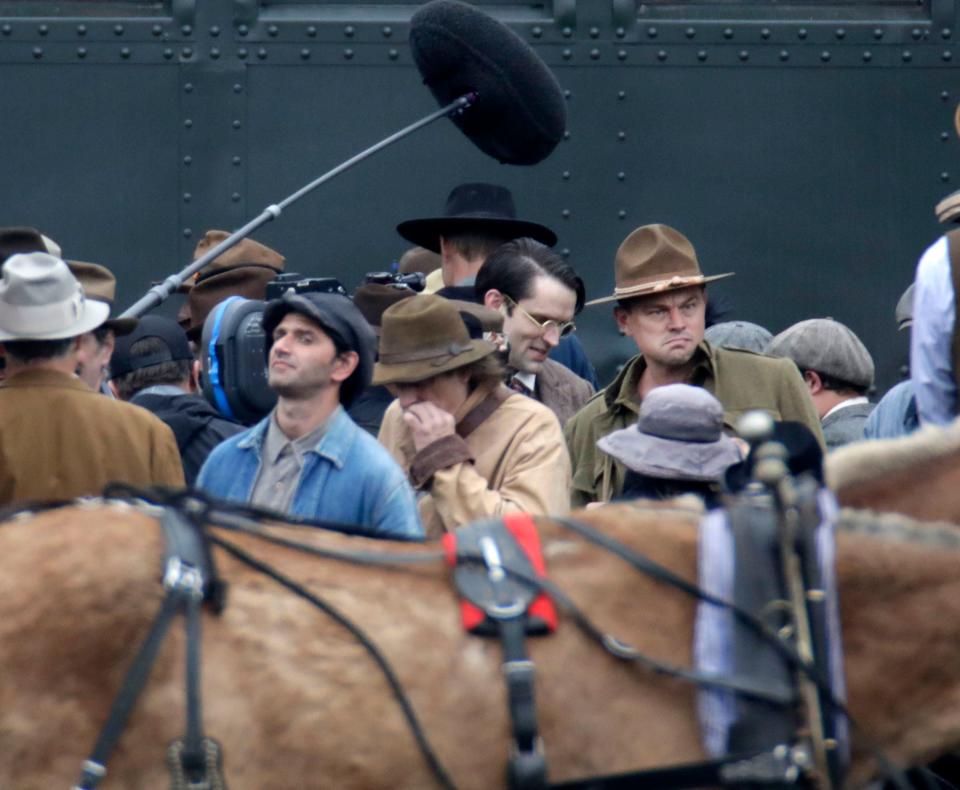
Where and when was 'Killers of the Flower Moon’ filmed?
Although filming was delayed for a year due to the COVID-19 pandemic, principal photography on "Killers of the Flower Moon" started in April 2021, with production centered in Bartlesville, Pawhuska and Osage County. Filming wrapped in September 2021.
"To be able to tell this story on the land where these events took place is incredibly important and critical to allowing us to portray an accurate depiction of the time and people," Scorsese said in a 2021 statement.
Over the five months of filming, the vast production hired numerous Osage Nation consultants, performers and artisans, along with other Oklahoma cast and crew, and recruited hundreds of extras. The moviemakers took over parts of downtown Pawhuska for more than two months so that the buildings could be transformed and Kihekah Avenue could be covered in dirt for the 1920s period film.
Filming on "Killers of the Flower Moon" in Oklahoma coincided with the May 2021 commemoration of the Tulsa Race Massacre centennial, and the parallels between the destruction of Tulsa's Black Wall Street and the Reign of Terror were not lost on Scorsese or his cast.
"The artistic souls on the stage here cared about telling a story that pierces the veil of what society tells us we're supposed to care about. ... Who else is going to challenge people to challenge their own complicity in white supremacy on such a platform, except for this one here?" Gladstone said of Scorsese at Cannes.
"Other artists are doing that work; people listen to what this one says. ... We're speaking of the 1920s Osage community, we're talking about Black Wall Street in Tulsa, we're talking about a lot in our film — and why the hell does the world not know about these things? Our communities always have, it's so central to everything about how we understand our place in the world ... and we need these allies."

When will 'Killers of the Flower Moon' be in theaters and on streaming?
Following its Cannes premiere, "Killers of the Flower Moon" will open in theaters in limited release starting Oct. 6.
Produced by Apple Original Films, "Killers of the Flower Moon" will open in wide release on Oct. 20. Paramount Pictures is teaming with Apple on eagerly awaited film's theatrical release.
"Killers of the Flower Moon" then will start streaming globally on Apple TV+, although the date that will begin has not yet been announced.
This article originally appeared on Oklahoman: What was the Reign of Terror? History of 'Killers of the Flower Moon'
